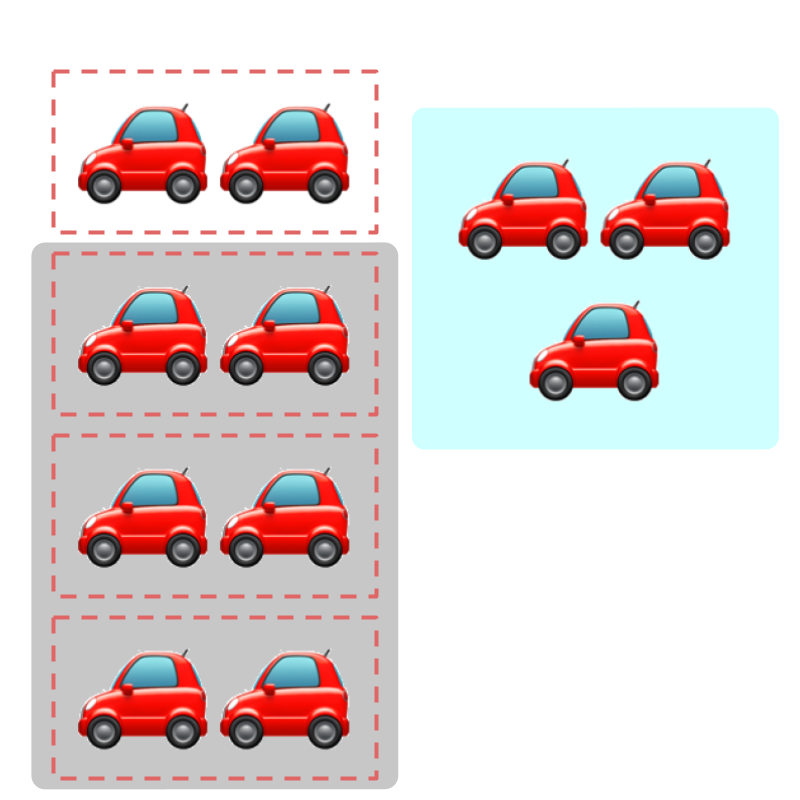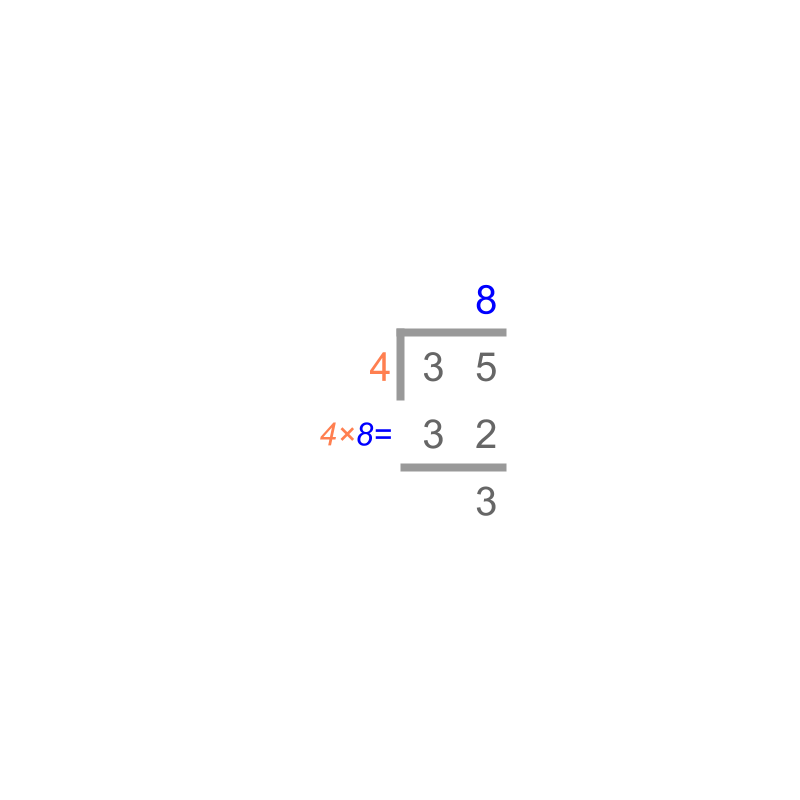
what you'll learn...
overview
Decimals are fractions with standard place values. In this page, the following for decimals are explained.
• Division in first principles -- splitting a quantity into a number of parts and measuring one part
• simplified procedure : Sign property of division and long division method for Decimals.
recap
"Division" can be described as
dividend split into divisor number of parts.
quotient and remainder. Considering the figure with cars and dotted-boxes. is split into equal parts with each assigned cars. There are cars remaining. The remaining cars are not enough to assign equally to each dotted-box.
Considering the figure with cars and dotted-boxes. is split into equal parts with each assigned cars. There are cars remaining. The remaining cars are not enough to assign equally to each dotted-box.
One part is counted as and remaining amount is .
division is inverse of multiplication. And division of fractions are explained with that.
(multiply by inverse)
.
splitting
Decimals are fractions with standardized place-values.
Consider .
By first principles, the dividend is split into divisor number of equal parts : . And one part is , or equals in decimals.
Consider ".
By first principles, the dividend is split into divisor number of equal parts :
This is done in two steps:
first step: is split into (denominator of ) times is .
Second step: the result from the first step is split into (numerator of ) times is
The result is , or equals in decimals.
aligned or opposed to direction
Decimals are directed numbers, that is decimals are either positive or negative.
aligned in direction is "".
opposed in direction is "".
Directed numbers, positive and negative, are explained as "aligned in direction" and "opposed in direction" respectively.
Consider
By first principles, the dividend aligned in direction is split into the divisor opposed in direction number of equal parts :
This is done in two steps,
first step: aligned in direction is split into aligned in direction (denominator of ) times is aligned in direction.
Second step: the result from the first step aligned in direction is split into (numerator of )opposed in direction times is opposed in direction.
The result is opposed in direction, or equals in decimal number form.
decimal division
Decimal Division by first principle : Decimal division is splitting the dividend, into divisor number of parts with sign of the numbers (direction) handled appropriately.

In whole numbers, we have studied Division by Place-value as illustrated in the figure. This procedure is used in decimals in a later step.
In Integers, we have studied Sign-property of Division.
• +ve +ve = +ve
• +ve -ve = -ve
• -ve +ve = -ve
• -ve -ve = +ve
This is applicable to decimals.
In Fractions, we have studied that division is inverse of multiplication.
For example, to divide , it is modified to
Decimals are divided keeping in mind the place-value representation, which is a form of fractions.
For example, to divide , it is equivalently thought as and modified to multiplication .
simplify
Consider division of
This is equivalently
Understanding the above, a simplified procedure to divide the decimals is devised.
The decimal point of dividend and divisor are removed and the numbers are divided as integers.
eg: is modified to the integer form .
is modified to the integer form .
The number of decimal-places in the dividend and divisor are counted.
eg: has decimal-places.
has decimal-places.
Now the integer forms are divided.
eg:
The number of decimal places of divisor is subtracted from dividend number of decimal places.
eg: .
The quotient form is modified to have the number of decimal points give by the difference above.
eg: is modified to , that is decimal point moved to the left by .
example
Consider ".
Difference in decimal places is
So the product decimal place moves place to the right.
summary
Decimal Division -- Simplified Procedure :
The signs (+ve / -ve) are handled as in Sign-property of Integer Division
• +ve +ve = +ve
• +ve -ve = -ve
• -ve +ve = -ve
• -ve -ve = +ve
The decimal places are removed and the division is carried out as per Whole number Division by Place Value.
• The decimal-point is modified in the result
• The decimal-point is moved to the left the number of times equal to the difference number of decimals in dividend minus number of decimals in divisor. A positive difference moves the decimal point to the left, and a negative difference moves the decimal point to the right.
Outline
The outline of material to learn "decimals" is as follows.
Note: goto detailed outline of Decimals
• Decimals - Introduction
→ Decimals as Standard form of Fractions
→ Expanded form of Decimals
• Decimals - Conversion
→ Conversion between decimals and fractions
→ Repeating decimals
→ Irrational Numbers
• Decimals - Arithmetics
→ Comparing decimals
→ Addition & Subtraction
→ Multiplication
→ Division
• Decimals - Expressions
→ Expression Simplification
→ PEMA / BOMA